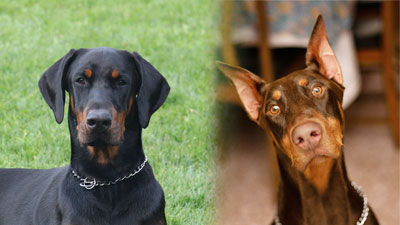- Size
- Smallest
- Small
- Small to Medium
- Medium
- Large
- Giant
- Characteristics
- Smartest
- Hypoallergenic
- Fluffy
- Best Guard
- Best Family
- Best for Kids
- Low Shedding
- Healthiest
- Police Dogs
- Most Calm
- Quietest
- Color
- White
- Black
- Grey
- Brown
- Blue
- Red
- Coat
- Hairless
- Short
- Long
- Origin
- Japan
- China
- Australia
- Germany
- Italy
- United States
- France
- Group
- Hound
- Terrier
- Herding
- Toy
- Working
- Sporting
Why Do Some Dog Ears Stand Up?

Photo by Lesly Juarez on Unsplash
Dog ears come in a remarkable variety of shapes and sizes. Some dogs have floppy ears that hang down, while others boast upright or pricked ears that proudly stand tall. This fascinating characteristic has captivated dog lovers for centuries, sparking questions about why some dogs have erect ears and what factors contribute to this unique feature.
In this article, we will delve into the genetics and evolution behind upright ears in dogs, shedding light on this intriguing aspect of canine anatomy. By exploring the biology, selective breeding, and the role of genetics in shaping ear positions, we hope to provide a comprehensive understanding of why some dog ears stand up.
The Role of Genetics
To understand the origins of upright ears in dogs, it is crucial to explore the intricate world of genetics. Genes play a vital role in shaping an animal's physical characteristics, including ear shape and position. The canine genome contains specific genetic markers responsible for the development of ear cartilage and muscles, which ultimately determine the ear's final shape and position.
In dogs with upright ears, a key genetic factor is the presence of a dominant gene known as the "E" gene. This gene controls the growth of the ear muscles and cartilage structures, enabling them to remain upright. In the presence of this dominant gene, the ear muscles are strong and taut, pulling the ears upward and giving them their characteristic pricked appearance.
However, not all dogs possess this dominant gene, which explains why some dogs have floppy or droopy ears. These dogs may lack the specific genetic markers required for strong ear muscles or have recessive genes that result in softer, more pliable cartilage. As a result, their ears are unable to maintain an upright position.
Selective Breeding
Selective breeding plays a significant role in shaping the physical characteristics of domesticated dogs, including their ear positions. Over centuries of selective breeding, humans have favored certain traits, including erect ears, for a variety of reasons.
In some cases, breeders selected dogs with naturally erect ears because they believed it was a desirable trait that enhanced the dog's appearance. Dogs with erect ears often exude an alert and attentive expression, which may have been significant for working or guarding roles. Consequently, breeders intentionally bred dogs with upright ears in order to strengthen these characteristics in subsequent generations.
Additionally, selective breeding for certain characteristics frequently occurs when dogs are bred for specific tasks or roles. Breeds such as the German Shepherd and Belgian Malinois, renowned for their exceptional working abilities, often possess upright ears. The functional advantage of these ears lies in their ability to enhance sound localization, allowing dogs to detect even the slightest noises in their environments. This keen auditory perception is crucial for working dogs involved in scent detection, search and rescue, or protection work.
Evolutionary Factors
While humans have wielded significant influence over dog ear positions through selective breeding, evolutionary factors have also played a role in shaping this characteristic. Adapting to various environments and ecological niches has driven the evolution of many traits in canines, including their ears.
In the wild, canids such as wolves and foxes exhibit a range of ear positions, depending on their habitat and way of life. Wolves, for example, have erect ears that enable them to efficiently communicate within their packs and detect prey or potential threats. The erect ears act as antennae, capturing and pinpointing sound waves, giving wolves a crucial advantage in their survival.
Foxes, on the other hand, display a wider range of ear positions. Some fox species, like the fennec fox, possess large ears that not only aid in sound localization but also provide a means of thermoregulation in their desert habitats. By increasing surface area, the large ears facilitate heat dissipation, helping these foxes tolerate the scorching temperatures of their environment.
The influence of evolutionary factors is evident in certain dog breeds as well. For instance, the Siberian Husky, bred to thrive in arctic conditions, often possesses erect ears. This ear position helps protect the dog's inner ear from frostbite, as the upright ears create a barrier to prevent freezing temperatures from entering the ear canal.
Breeds Showcasing
Here are 5 dog breeds with prick or erect ears that epitomize the elegance and vigilance associated with upright ears.
1. German Shepherd
The German Shepherd is an iconic breed celebrated for its intelligence, versatility, and upright ears. Bred for herding and guarding, the German Shepherd's erect ears exemplify the fusion of form and function, contributing to its regal and alert appearance.
2. Doberman Pinscher
The Doberman Pinscher, known for its sleek physique and protective instincts, showcases ears that stand tall. The upright ears of the Doberman convey a sense of alertness and contribute to its overall appearance of elegance and vigilance.
3. Belgian Malinois
The Belgian Malinois, a breed prized for its versatility and agility, features upright ears that enhance its attentive and focused expression. Known for roles in police work and search and rescue, the breed's erect ears align with its keen responsiveness to commands.
4. Siberian Husky
The Siberian Husky, with its striking appearance and friendly demeanor, showcases upright ears that complement its majestic features. These ears contribute to the breed's alert expression and reflect their northern heritage. Siberian Huskies, often associated with sledding and endurance, carry themselves with a sense of grace enhanced by their proud upright ears.
5. Australian Cattle Dog
The Australian Cattle Dog, valued for its herding skills and agility, displays upright ears that contribute to its efficient and attentive demeanor. These ears stand tall, reflecting the breed's readiness for action and responsiveness to commands. Australian Cattle Dogs carry their upright ears proudly as they excel in various working roles.
Functional Advantages of Upright Ears
Enhanced Auditory Acuity:
One of the primary functional advantages of upright ears is enhanced auditory acuity. The erect position allows the ears to capture and funnel sound more effectively toward the ear canal. This heightened ability to detect subtle sounds in the environment is particularly advantageous for breeds with roles as working dogs, herders, or guardians. Breeds like the German Shepherd and Belgian Malinois, with their upright ears, showcase the intersection of form and function.
Improved Sound Localization:
Upright ears enable dogs to precisely locate the source of a sound, contributing to their remarkable ability to detect even the faintest noises. This skill is invaluable for working dogs involved in tasks such as search and rescue, police work, and herding. The upright ears not only enhance the dog's awareness of its surroundings but also aid in responding to auditory cues with precision.
Thermoregulation:
While not the primary function, the upright position of the ears also contributes to thermoregulation. Dogs dissipate heat primarily through panting, but some heat exchange occurs through the ears. The erect stance allows for better air circulation around the ears, aiding in cooling the blood vessels. While not as significant as other factors, this additional benefit may have contributed to the preservation of upright ears in certain breeds.
Ear Health and Care for Upright Ears
Routine Inspection and Cleaning:
Regardless of ear position, regular inspection and cleaning are essential for maintaining optimal ear health. Upright ears, while potentially less prone to certain issues like moisture retention, still require attention to prevent wax buildup, debris accumulation, and potential infections. Routine cleaning with veterinarian-approved solutions is crucial for ear hygiene.
Preventing Ear Infections:
Upright ears, by allowing for better air circulation, may reduce the likelihood of moisture-related ear infections compared to floppy ears. However, pet owners should remain vigilant, especially in breeds with minimal ear hair that might not provide as much protection. Avoiding excessive moisture, cleaning after water activities, and addressing any signs of discomfort promptly can help prevent ear infections.
Conclusion
The fascinating world of dog ears encompasses a rich tapestry of genetics, selective breeding, and evolutionary factors. The presence of specific genetic markers, such as the "E" gene, determines whether a dog's ears remain in an upright position or become floppy. Selective breeding has played a significant role in cultivating breeds with upright ears, often valuing their aesthetic appeal and functional advantages.
Additionally, evolutionary factors have influenced ear positions in canids, with some ear shapes and positions being adaptive responses to specific environments. Whether it be for enhancing sound localization, thermoregulation, or communication purposes, natural selection has played a role in shaping ear positions in the wild and certain domesticated dog breeds.
You May Also Like
 Breed ReviewsUnveiling the Debate: Cropped Ears vs. Natural Ears in Dogs
Breed ReviewsUnveiling the Debate: Cropped Ears vs. Natural Ears in Dogs Breed ComparisonBelgian Malinois vs. German Shepherd: Which Is Better?
Breed ComparisonBelgian Malinois vs. German Shepherd: Which Is Better? Breed ComparisonDoberman vs. Rottweiler: Which Is the Better Guard Dog?
Breed ComparisonDoberman vs. Rottweiler: Which Is the Better Guard Dog? Breed ComparisonAlaskan Malamute vs. Siberian Husky: Which Is Better?
Breed ComparisonAlaskan Malamute vs. Siberian Husky: Which Is Better? Dog BreedsA Compact Hunter: 6 Small Dog Breeds That Are Wirehaired
Dog BreedsA Compact Hunter: 6 Small Dog Breeds That Are Wirehaired Best Hunting Dogs10 Dog Breeds That Make The Best Hunting Companions
Best Hunting Dogs10 Dog Breeds That Make The Best Hunting Companions